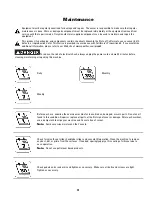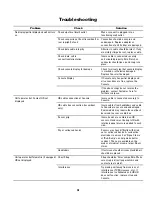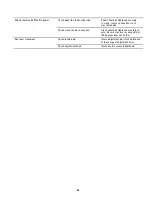
Remote Heart Rate Monitor
Monitoring your Heart Rate is one of the best procedures to control
the intensity of your exercise.
Contact Heart Rate (CHR) sensors are installed to send your heart
rate signals to the Console. The Console can also read telemetry
HR signals from a Heart Rate Chest Strap Transmitter. The Console
shows your Heart Rate in Beats Per Minute (BPM).
If you have a pacemaker or other implanted electronic
device, consult your doctor before using a wireless chest
strap or other telemetric heart rate monitor.
Contact Heart Rate Sensors
Contact Heart Rate (CHR) sensors send your heart rate signals to the Console. The CHR sensors are the stainless steel parts of the
Handlebars. To use, put your hands comfortably around the sensors. Be sure that your hands touch both the top and the bottom of
the sensors. Hold firm, but not too tight or loose. Both hands must make contact with the sensors for the Console to detect a pulse.
After the Console detects four stable pulse signals, your initial pulse rate will be shown.
Once the Console has your initial heart rate, do not move or shift your hands for 10 to 15 seconds. The Console will now validate the
heart rate. Many factors influence the ability of the sensors to detect your heart rate signal:
•••
Movement of the upper body muscles (including arms) produces an electrical signal (muscle artifact) that can interfere with
pulse detection. Slight hand movement while in contact with the sensors can also produce interference.
•••
Calluses and hand lotion may act as an insulating layer to reduce the signal strength.
•••
Some Electrocardiogram (EKG) signals generated by individuals are not strong enough to be detected by the sensors.
CHR detection may be limited to walking or slow jogging due to the extreme muscle artifacts and hand motion generated by a
comfortable running style. If your heart rate signal ever seems erratic after validation, wipe off your hands and the sensors
and try again.
Heart Rate Calculations
Your maximum heart rate usually decreases from 220 Beats Per Minute (BPM) in childhood to approximately 160 BPM by age 60.
This fall in heart rate is usually linear, decreasing by approximately one BPM for each year. There is no indication that training
influences the decrease in maximum heart rate. Individuals of the same age could have different maximum heart rates. It is more
accurate to find this value by getting a stress test than by using an age related formula.
Your at rest heart rate is influenced by endurance training. The typical adult has an at rest heart rate of approximately 72 BPM,
where as highly trained runners may have readings of 40 BPM or lower.
The Heart Rate table is an estimate of what Heart Rate Zone (HRZ) is effective to burn fat and better your cardiovascular system.
Physical conditions vary, therefore your individual HRZ could be several beats higher or lower than what is shown.
The most efficient procedure to burn fat during exercise is to start at a slow pace and gradually increase your intensity until your
heart rate reaches between 60 – 85% of your maximum heart rate. Continue at that pace, keeping your heart rate in that target zone
for over 20 minutes. The longer you maintain your target heart rate, the more fat your body will burn.
The graph is a brief guideline, describing the generally suggested target heart rates based on age. As noted above, your optimal
target rate may be higher or lower. Consult your physician for your individual target heart rate zone.
999









































